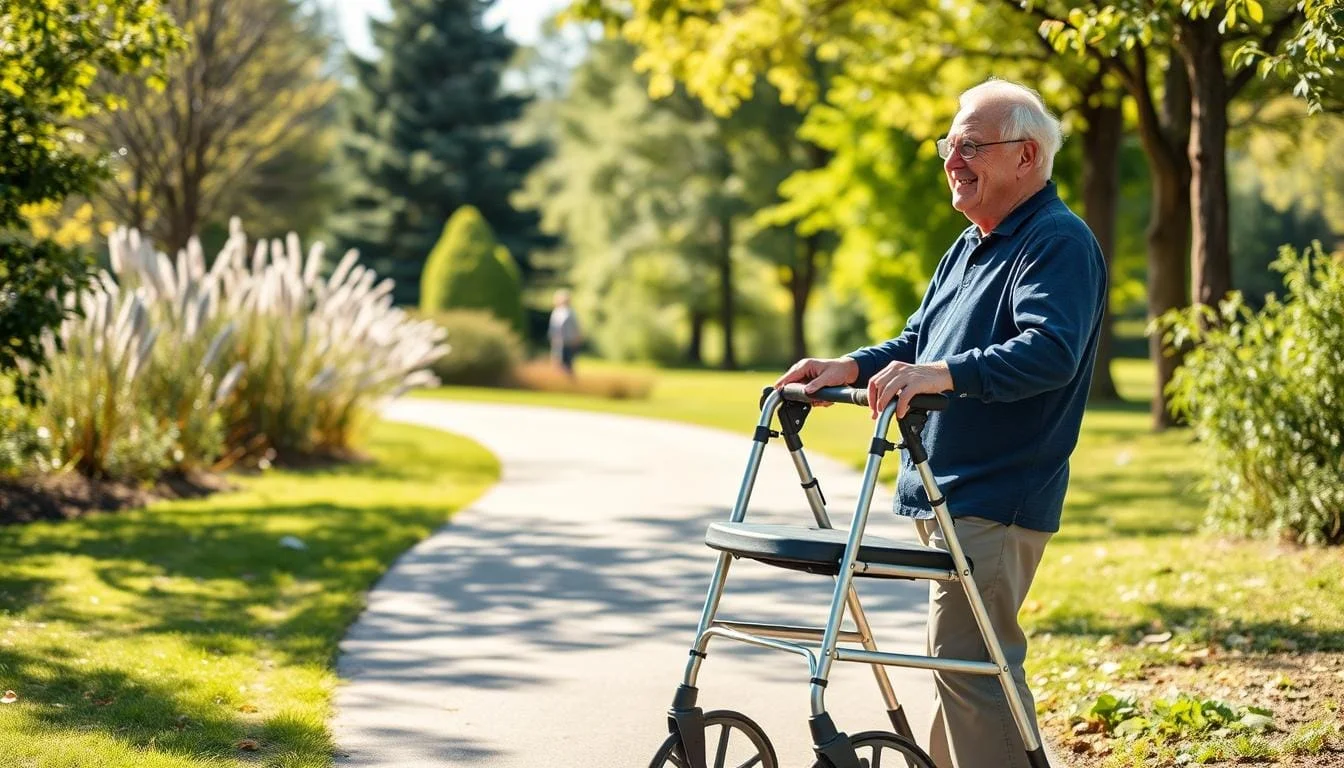Stay Mobile and Comfortable: Choosing the Right Rollator with Seat
Mobility challenges can significantly affect independence and quality of life, especially for seniors or those recovering from surgery or dealing with chronic conditions. Thankfully, assistive devices like rollators have made it easier for people to stay active, safe, and self-reliant. One of the most popular and practical options is the rollator with a seat—a walking aid that not only supports movement but also provides comfort and rest when needed. Choosing the right rollator with a seat is essential to ensure it matches your needs, lifestyle, and level of physical ability.
What Is a Rollator with a Seat?
A rollator with a seat is a type of mobility aid that includes wheels (usually three or four), handlebars with brakes, and a built-in seat. Rollators differ from traditional walkers in that they glide forward without needing to be lifted for every step. Instead, they glide smoothly across the ground, providing continuous support while walking.
The seat feature allows users to take breaks during long walks, errands, or outings—an invaluable function for individuals who experience fatigue, joint pain, or balance issues. Many models also include a storage pouch or basket under or behind the seat, making it convenient to carry personal items without needing an extra bag.
Why Comfort and Mobility Matter
Comfort and mobility go hand in hand. When someone struggles with walking, every movement can become a source of anxiety or discomfort. The right rollator offers physical support and emotional reassurance. It promotes independence, reduces the risk of falls, and encourages users to remain socially and physically active. Having a comfortable seat built into the device ensures that taking a break is always within reach, especially in places where seating is unavailable or limited.
Key Features to Consider When Choosing a Rollator with a Seat
Not all rollators are created equal. When selecting the right model, it’s important to consider various features that impact usability, comfort, and overall safety. Consider the following key factors when making your choice:
1. Seat Size and Padding
The seat should be wide and cushioned enough to sit on comfortably for extended periods. Look for a rollator with a padded seat and backrest, especially if you plan to use it often outdoors or in public places.
2. Height Adjustability
Both the handles and seat should be adjustable to accommodate your height. Proper adjustment ensures good posture, reduces strain on your wrists and back, and makes it easier to sit down or get up without assistance.
3. Wheel Size and Terrain Compatibility
Wheels that are 8 inches or larger tend to perform better on rough terrain and outdoor paths. If you mostly use your rollator indoors, smaller wheels may suffice, but if you’re an active person who enjoys parks or outdoor strolls, opt for a model with all-terrain wheels.
4. Braking System
A reliable brake system is crucial for safety. Most rollators come with loop-style hand brakes that lock the wheels in place when seated or standing still. Test the brakes to ensure they are easy to engage and release, even if you have arthritis or limited hand strength.
5. Portability and Storage
Choose a lightweight model that folds easily for storage and transport. If you travel often or need to load the rollator into a car, compactness and portability are important features.
6. Weight Capacity
Make sure to check the rollator’s weight limit. Standard models typically support up to 250–300 pounds, but heavy-duty versions are available for users who need additional support.
7. Storage Options
Several rollator models come equipped with built-in storage options such as a basket, pouch, or compartment beneath the seat. These features are convenient for carrying items like a water bottle, purse, or medications, allowing hands-free walking.
Who Benefits from a Rollator with a Seat?
Rollators with seats are ideal for a variety of users, including:
- Seniors who experience fatigue during extended walks
- People recovering from surgery or injury
- Individuals with conditions like arthritis, multiple sclerosis, or COPD
- Those who want to maintain mobility while having the reassurance of rest breaks
Even people who don’t require a mobility aid all the time find rollators helpful for occasional support on longer outings, shopping trips, or travel.
Safety Tips for Using a Rollator with Seat
To get the most benefit from your rollator and stay safe, follow these tips:
- Always lock the brakes before sitting or standing up from the seat
- Avoid sitting while moving; the seat is meant for stationary use only
- Don’t use the rollator to pull yourself up from a seated position without brake locks engaged
- Keep the path ahead clear to prevent tripping over obstacles or uneven surfaces
- Maintain your rollator by checking wheels and brakes regularly for wear and tear
Final Thoughts
A rollator with a seat is more than just a walking aid—it’s a tool for independence, comfort, and confidence. Whether you’re navigating a busy grocery store or enjoying a walk in the park, having the option to sit and rest gives you greater freedom and peace of mind. With so many models on the market, it’s important to choose one that fits your specific needs and lifestyle.
Investing in the right rollator can transform your daily life, enabling you to move freely and comfortably without sacrificing safety or convenience. By focusing on key features like seat comfort, brake reliability, and terrain compatibility, you can find a rollator that helps you stay mobile, supported, and independent.







